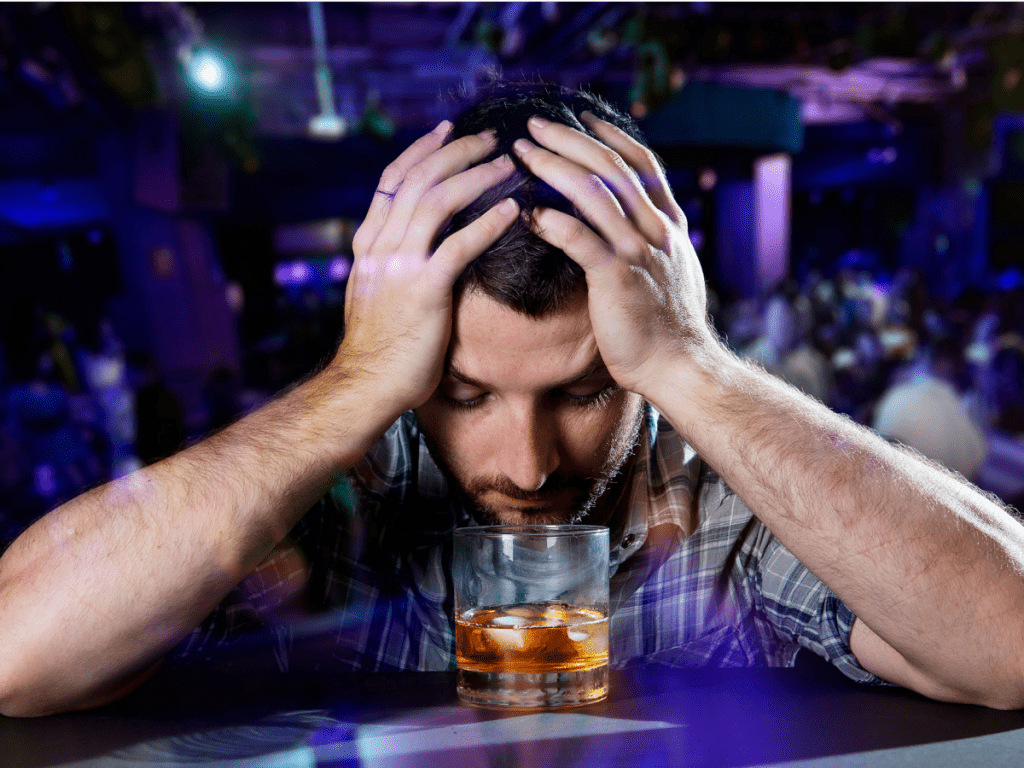Are you sick of waking up with a hangover and having to piece together the previous night’s events? Do you often think about your next drink, if people knew you were drunk, or wonder if you have a problem with treating alcoholism?
If the above sounds familiar, you may have the disease of alcoholism or be suffering from the effects of alcohol abuse. We’re going to discuss what it means to be an alcoholic and how you may go about treating this life-threatening sickness.
What is Alcoholism?
The answer to this question varies greatly, depending on who you ask. We’re going to look at a few answers to help give you the best picture of what this disease is.
The Diagnostic and Statistical Manual of Mental Disorders (DSM) is used to help doctors diagnose and address various mental ailments and illnesses. In this book, Alcohol Use Disorder (AUD) is listed–not technically ‘alcoholism.’
To paraphrase the DSM-5, the definition of Alcohol Use Disorder is a recurring pattern of alcohol use that leads to significant impairment and can be marked by at least two of eleven occurrences in the past 12 months.
A partial list of the criteria used includes:
- Drinking more alcohol over a longer time than intended
- Craving to use alcohol
- Failing to meet obligations at work, school, or home
- Using alcohol despite problems caused or worsened by it
If you find out that you meet even, two criteria for AUD, drinking is likely already a problem in your life.
For a different perspective, let’s take a look at what Alcoholics Anonymous says about the disease. Although many people see AA as old and antiquated, their ideas are quite similar to modern medicine.
This group doesn’t have a set definition of the problem but acknowledges that it is a mental obsession and a physical compulsion, with sufferers not knowing how or when to cease alcohol use. When you compare these ideas to the DSM’s criteria, you will notice several parallels.
What is Alcohol Abuse?
The key difference in suffering the effects of alcohol abuse and alcoholism is the lack of physical dependence on the substance. Alcohol abuse can be seen as ‘less serious’ than full-blown alcoholism, but the truth is, it is a serious problem in itself.
Basically, many of the criteria of alcoholism are met, but there have not been any serious consequences yet. Additionally, because there is not a physical dependence on alcohol, there isn’t a physical withdrawal–but that doesn’t mean you’re in the clear!
Treating Alcohol Use Disorder & Alcohol Abuse Symptoms
You may have previously tried to stop drinking alcohol on your own by quitting cold turkey. You may have attempted to limit your use. Or you might want to stop but have no idea how to ‘stay stopped.’
This is where choosing a rehab facility comes in. Depending on the number of criteria you meet and the severity of your AUD or alcohol abuse, you may find that an outpatient treatment plan is all you need. It is also entirely possible that you require an inpatient stay.
A big determining factor of whether you receive the recommendation to stay inpatient or attend an outpatient treatment is your risk of relapse. If your treatment center believes there is a high chance of relapse, you will likely stay 28-32 days.
If you are serious about recovering from alcohol abuse or AUD, you may consider taking the inpatient route anyway. Choosing an inpatient facility will allow for constant monitoring, 24/7 support, daily, in-depth counseling sessions, recreation, education, and the establishment of a routine. You will also likely be introduced to 12-step support groups, if you are unfamiliar.
Dealing with Withdrawal Symptoms
Although it is mentioned that with alcohol abuse there is no physical withdrawal, it doesn’t mean that you are in the clear. You will just be able to bypass the initial sickness that comes from stopping alcohol use.
With AUD, there will be an uncomfortable period of physical illness, including headaches, nausea, diarrhea, and possibly seizures. It is important that during this phase of alcohol withdrawal, you are medically supervised to ensure your safety. Luckily, there are ways to medically detox so that your body can comfortably adjust to not having alcohol.
It is worth noting that alcohol withdrawal spans far longer than just the physical illness and initial cravings. Unfortunately, when you are a heavy drinker, your brain chemistry changes over time. These changes are not corrected with a few alcohol-free days.
This lengthy withdrawal process is called Post-Acute Withdrawal Syndrome, or PAWS. PAWS can last up to several months and is basically your brain rewiring itself. Some of the biggest issues that you will face with PAWS is irritability, depression, fatigue, and even chronic pain.
PAWS is addressed in both inpatient and outpatient treatments. Counselors will help you form a plan on what to do when these symptoms arise. Should you choose not to attend treatment, support groups and licensed professionals are also familiar with this condition and will help.
Life After Alcoholism & Alcohol Abuse

It may be hard to imagine now, but when you choose to stop drinking, life does get better. Not all of your problems are going to disappear overnight and you will have days that you feel like you NEED a drink.
The good news is that those huge problems that you are drinking to forget will seem smaller and you will know how to better approach them. As far as those intense cravings and urges to drink go–those are usually fleeting and can be handled by calling a friend, sponsor, or counselor.
Choosing to be sober and recover from alcoholism isn’t going to be the easiest path. You may lose ‘friends,’ struggle to find enjoyable activities, and will have to work on your recovery every day. However, with the right treatment and your own perseverance, you will experience a life you probably never dreamt of!








